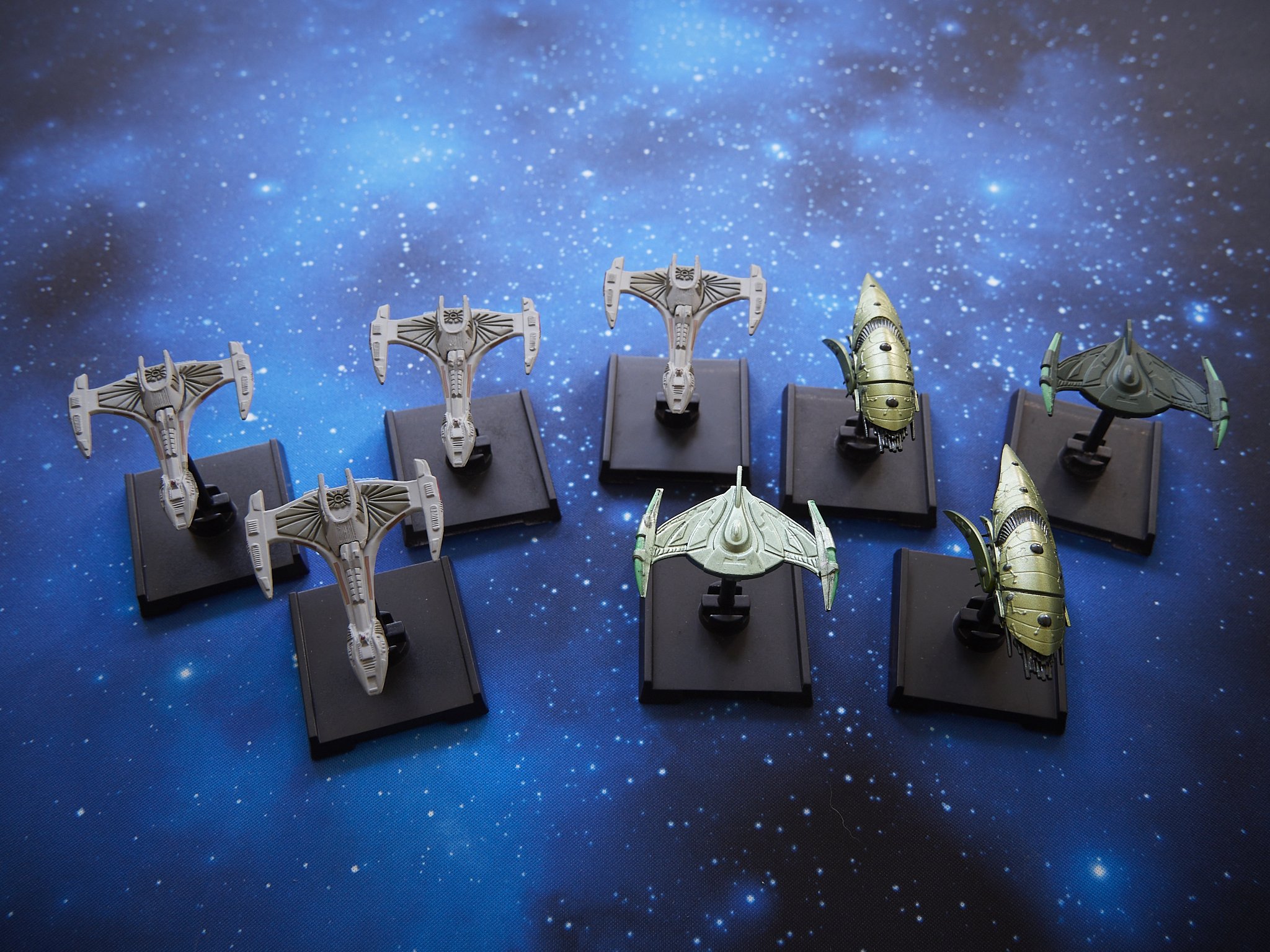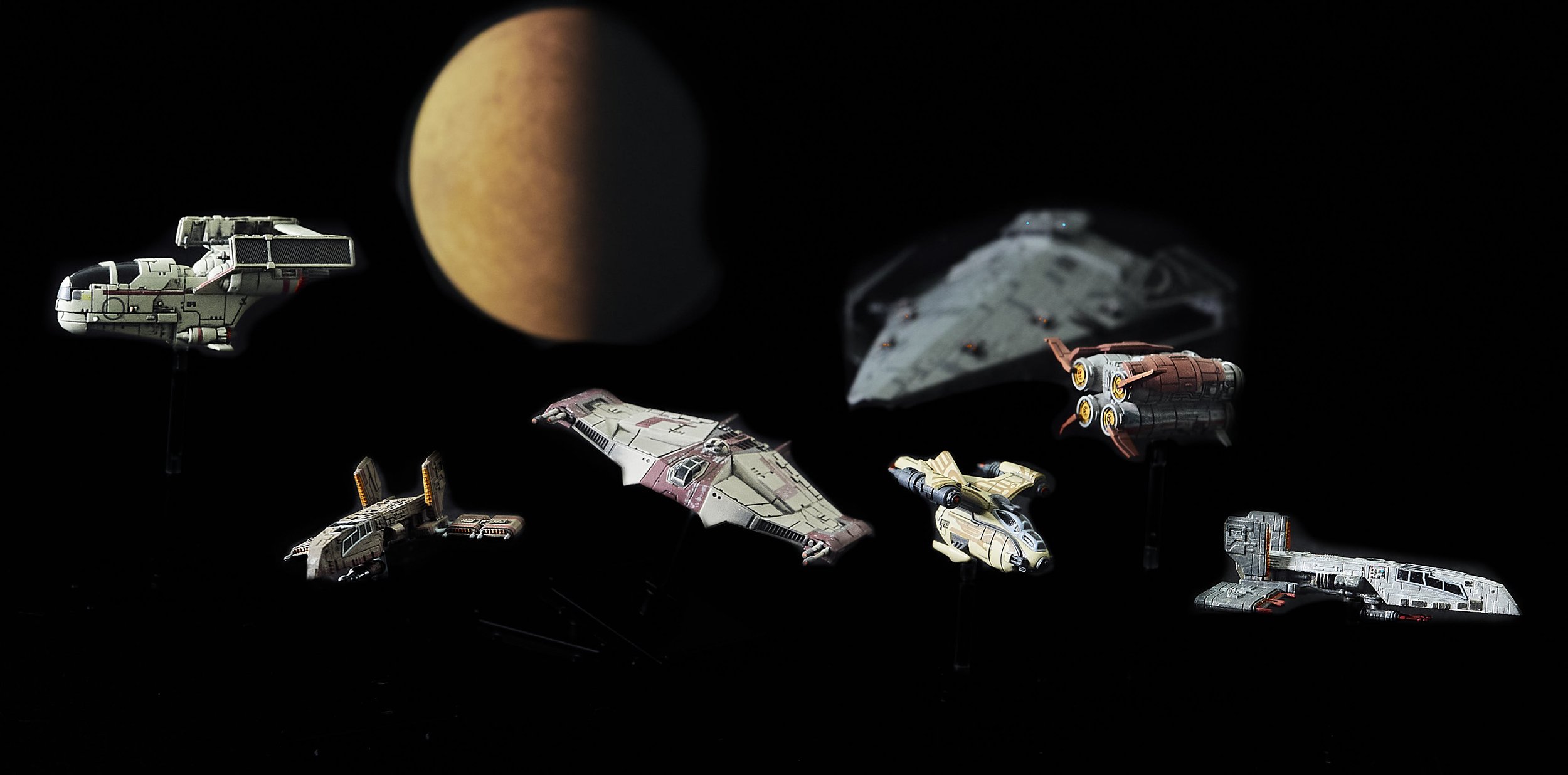X Wing and Attack Wing share the same basic concepts and mechanical skeleton. They rely on a predict-commit-play and resolve mechanic, use almost identical gae components and effectively cover the big two camps of sci-fi fandoms.
To my mind, there a few main differences between the games (I will use 1e X Wing as my comparison as I am more familiar and feel it is the cleanest, most directly relevant comparison).
In 1e, some ships only have the near standard Focus and one other, some, but few have all four spaces filled.
In AW, Actions are basically the same core idea, but fighter style manoeuvres are dropped. Actionsa re also far more consistent. Most ships have 4, but there is some swapping out.
Actions
This is my number one, because actions determine core tactics, feel and even the scale of the game. Actions are so defining that the base line limitation placed on all our reduced forms of the X Wing 1e game is that only the base 4 actions are allowed.
These two games share a hard limit of 4 actions maximum per ship, which can be artificial limiting, especially in AW. XW 2e has moved on from this, which avoids the Action economy cascade through upgrades that 1e resorted to.
Big vs little has a genuine game dynamic in X Wing.
In X Wing (almost) all ships have Focus. This is the catch-all attack/defence versatile action. Not as strong as committing fully, it is a great action if unsure, is sometimes needed and often spins off into other effects.
Battle Stations is the equiv of Focus, allowing a basic attack or defence buff after roll.
The second most common action is Target Lock, which has a requirement for most secondary weapons. In X Wing most ships have Lock, but “lesser” or light fighters don’t and Huge ships lack it entirely (fixed in 2e) as they have other methods.
Same name, same function. Few ships lack the TL option, but with the hard limit of 4, some ships do drop it if they have Cloaking or Regeneration.
Scan is an AW only action, working a little like Focus/Target Lock (anti Evade) for attack only with a link to some other actions. Almost always found on ships without Cloaking, almost never on Cloaking capable ships, which is where that artificial limits can be annoying.
Barrel Roll is an Imperial speciality, fairly common in Scum fleets (often due to their later game introduction) and not common in Rebels. If played at a “clasic” or “bare Bones” level, this becomes even more exaggerated. Upgrades and the odd pilot can add it, tending to make the difference less pronounced, one of the reasons we don’t use them.
No Roll at all in AW, but generally the ships are significantly larger (would have been nice to have let the smaller ones do them I guess, but that is likely absorbed by the scale difference as just better manoeuvring).
Boost is less common than Barrel Roll and more evenly spread through the fleets. Only a very few ships have both, although it is a common upgrade, again dropped by us in Bare Bones games. Boost is quite powerful and it is felt in our games that it is a special little snow flake, best left to the ships built for it.
No Boost, but a few ships can do a natural 6 move.
Evade, like the two above tends to be small fighter weighted, but there are exceptions and in “Bare Bones” or similar, there is only one ship with the whole gammut, the Tie Interceptor, making it the manoeuvre/Action king, although it lacks TL, so no ship in XW 1e has a “perfect” Action bar without upgrades.
Nearly all AW ships have Evade, except for the really clumsy monster Borg Cubes and Spheres. This is also a point of scale difference as many larger AW ships have low or no natural Agility. In TNG Battle for example, Agility is rare meaning most ships hit their targets, but in skirmish, the ships are slower and more agile.
Coordinate. A late game addition and one we have dropped in most game forms. This is similar to a few pilot abilities, so it has space in the game, but like a lot of late game additions, it wrankles. On Huge ships it fits and if we use the 1 card one Huge vessels, it makes a lot of sense.
No Equivalent. Captains are the big difference.
Reload. This is a rare one and very powerful if upgrades like Extra Ammo are not allowed.
No equivalent, except that many weaons are disabled rather than spent, becoming available again under the same circumstances as an action.
Rotate. Shadow Hunter only, so not used in our games, although it was standardised in 2e.
No Equivalent in actions.
Jam. Again a late game addition, not used by us, unless Huge ships are used.
No Equivalent, although Scan ia a little like it I guess.
Cloak. This is a special we use in soe forms of the game and is also available to Scum as an Illicit (but with strings). An earlier introduction, it fits thematically and being severaly limited also feels right.
Attack Wing uses Cloaking regularly (faction defining for Romulans and later Klingons) with Sensor Echo as a second linked action. These two do tend to hog the action bar though, so other options fall away.
Huge ships have several other Actions, some limited to them only (Reinforce, Regenerate).
AW has Regenerate in some factions
X Wing ships tend to be defined by their Action Bars, very few in 1e getting a full range, but in AW, almost all have 4, often looking very same-same and with that hard cap, one is at the expense of another. For example, Romulan Ships have Cloak and Echo, but not Scan or Battle Stations. This wrankles a little, because it is not accurate to the source, but a game is a game and card real estate is what it is.
In X Wing 2e, the expanded Action bars and more open application make the most sense, but I also like the simple and clean early 1e feel. In AW, I find action options are often predictable or equally frustrating.































